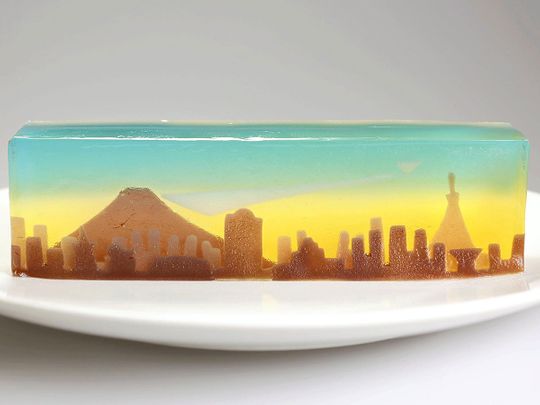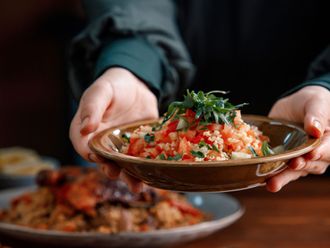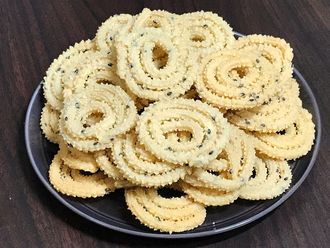
Tokyo: During the sweltering summertime, yokan, the Japanese jellylike red bean sweet, makes for a refreshingly cold dessert. The Wagashi Yui brand of confectionary maker Ryoguchiya Korekiyo in Aichi Prefecture has created a lineup of yokan that are traditional and eye-catching.
One of these products is a yokan called Tokyo Enbo, or "A distant view of Tokyo," which depicts landmark structures of Tokyo, high-rise buildings side-by-side and a dignified Mt. Fuji watching over the metropolis shining in morning's glow.
"We worked very hard to portray Tokyo as beautifully and emotionally as possible. We started with sketching the cityscape many times," said Makoto Nojiri, 58, head of the company's factory in the prefecture, recalling the work involved in developing the product. The sweet is made entirely by hand by the company's workers.
To make it, dark-colored yokan pieces formed in the shape of buildings and other objects are arranged on a tray. Then, transparent kingyokukan, made by boiling down agar with sugar, syrup and other ingredients, is poured over the yokan pieces and solidified. The color gradations of the sky are depicted by placing colored kingyokukan in layers.
"The buildings in more distant places are colored lighter. The kingyokukan is poured and solidified at different points in time to create a sense of depth," Nojiri said.
Another, called Amanohara, depicts Mt. Fuji in the changing seasons. Its transparent kingyokukan represents the clear sky. Neri yokan, which has a heavier texture, depicts the towering Mt. Fuji. The product is uniquely designed so that the color of Mt. Fuji in each slice is different depending on where it is cut. It has a refreshing lemon flavor.
Yokan featuring the four seasons are popular: Sawa no Midori yokan is for summer, with the motif of green maple leaves floating on a clear stream. Natsu Sasaragata, a summer exclusive, includes a watermelon-flavor yokan reminiscent of a watermelon's striped rind pattern.
To eat yokan requires a special utensil called a kuromoji, a pick carved out of spicebush wood. It works well for eating any soft Japanese sweet. "When eating yokan on a plate, it is common to cut it into pieces with a kuromoji and lift each piece to your mouth with it," said Ayumi Suzuki, Ryoguchiya Korekiyo public relations.
As for beverages that pair well with yokan, Suzuki recommends cold Chinese tea and black tea, in addition to Japanese tea. She also says that some customers serve fruit-flavored yokan with the carbonated cider for children. "You do not need to think of eating yokan and using kuromoji so formally," Suzuki said. "Just feel free to incorporate them into your daily life."
















